The Big Question! Is it worth getting an ATX v3.0 PSU now?
Everyone has been asking me lately why I should bother buying an ATX v3.0 PSU when the ATX v3.1 spec is out. This is because they cannot understand that the main difference between these two specs is just a PCB header on the PSU’s modular panel, which is super easy to replace. I have already written many details about the new and previous ATX specs, which you will find in the articles below, but I will make things easier for you to understand in today’s article!
- Will my ATX v3.0 PSU or GPU be compatible with 12V-2×6? Do I need a new cable/PSU/GPU? Here’s everything you need to know!
- ATX v3.1 & PCIe CEM 5.1 are official!
Short Reply
Actually, many ATX v3.0 PSUs already have a 12V-2×6 header instead of the 12VHPWR one. They don’t advertise it for two reasons:
- Any old stock left will not be sold if the product has been revised or if it advertises that it is ATX v3.1 instead of v3.0!
- The cost of changing the packaging, marketing material, etc., is high enough to wait for the right time to make the change.
The Connecting Cable is the SAME
Another detail that most users are unaware of is that the cable remains the same! There is no change to the cable connecting the PSU’s 12+4 pin (or 2x 8pins) to the graphics card’s 12+4 pin header! To provide you with the whole picture, there is one difference: the naming scheme! Instead of 12VHPWR cable, it is now called 12V-2×6 cable! Crazy right? I know! It is super crazy, but it is what it is!
ATX v3.1 Statement about 12+4 pin header on the PSU
This is a part of the ATX v3.1 spec, clearly stating that the 12V-2×6 PCB header is optional for modular PSUs! The same applies to non-modular PSUs, of course, where the high-power cable is soldered to the PSU’s PCB directly.
ATX v3.0 requirements are tougher than ATX v3.1!
To make matters even worse for potential buyers, with the only exception of the 12V-2×6 header (for PSUs that have it since Intel doesn’t make it clear whether a PSU should have it or not, or it is good to go with a 2x 8pin also, it only mentions that the graphics card must have a 12V-2×6 header), the ATX v3.1 spec is looser than the ATX v3.0 since it allows for only 12ms of hold-up time. In comparison, the latter sets a minimum of 17ms. So, can I please get an ATX spec with the 12V-2×6 header and 17ms hold-up time?
The PSU PCB Header: 12VHPWR or 12V-2×6? Does it Matter?
In most cases where melted connectors were reported, the problems were on the graphics card, not the PSU. This is because it is difficult not to connect correctly the 12VHPWR (or 12V-2×6) cable on the PSU, which is more rigid than a graphics card, which might have some movement, especially if the chassis doesn’t have a GPU anti-sagging mechanism.
Important ATX v3.1 spec Data
Resume
For all the reasons mentioned above, I believe I made clear the following things:
- Changing an ATX v3.0 PSU to an ATX v3.1 one only involves changing the 12+4 pin header to the new one (given that the PSU already has one).
- If a PSU uses 2x 8pin headers on its modular board to power the 12VHPWR (or 12V-2×6) cable, it is automatically ATX v3.1 compliant (provided it follows the rest of the requirements).
- PSUs with native 12VHPWR (or 12V-2×6) cables can be ATX v3.1 compliant if they already meet the ATX v3.0 spec.
- ATX v3.1 PSUs allow for a lower hold-up time (12ms instead of 17ms in ATX v3.0), which, in my opinion, is a big step backward!
- ATX v3.1 PSUs are NOT ATX v3.0 compliant because of the lower hold-up time. This is a first for the ATX spec! A newer spec does not cover the previous one in all aspects!
- There can be ATX v3.1 PSUs WITHOUT the 12V-2×6 connector, which have lower transient response requirements (150% peak instead of 200%).
Before investing in a new power supply, read my Best ATX v3.x PSUs article to check all alternative PSU offerings. You help me a lot by using my affiliate links, which don’t increase the product’s price. I get a commission from Amazon every time you do it, which can make a difference for me, especially now that I am on my own, working exclusively for my media and not for someone else.
Please consider buying stuff through the following affiliate links to support my work. You won’t pay more, while you will help me continue my hard work.

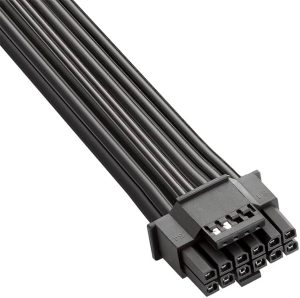

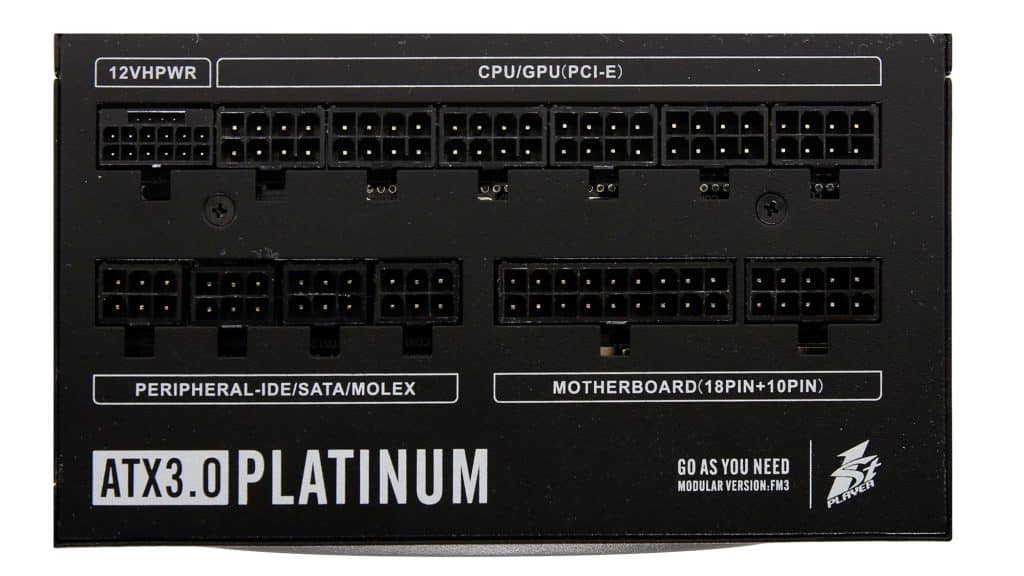

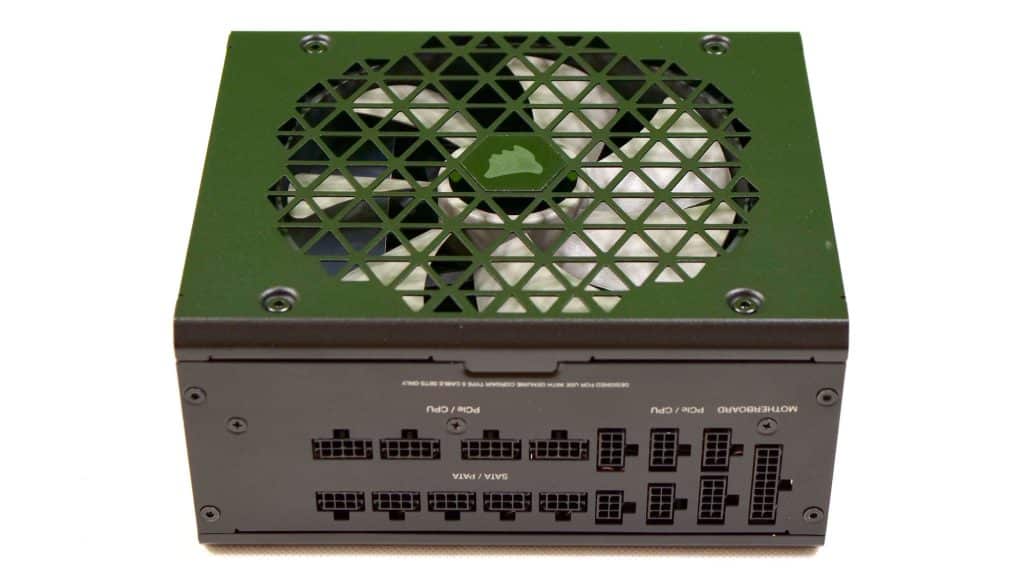
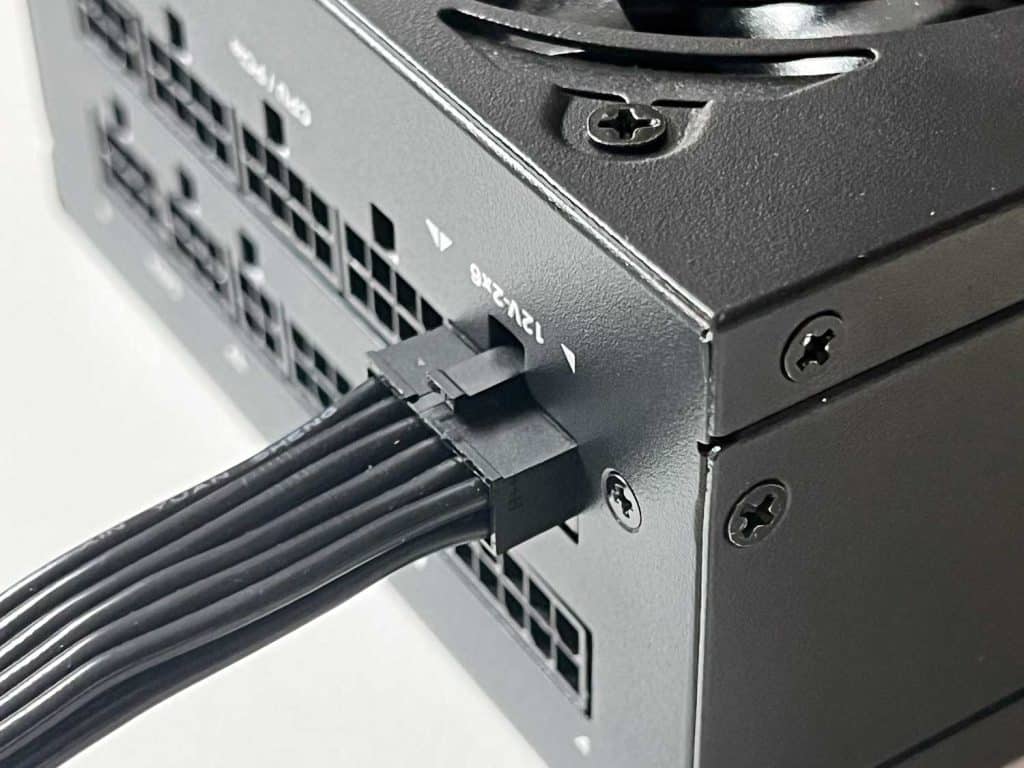

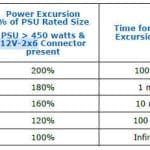

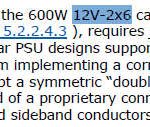

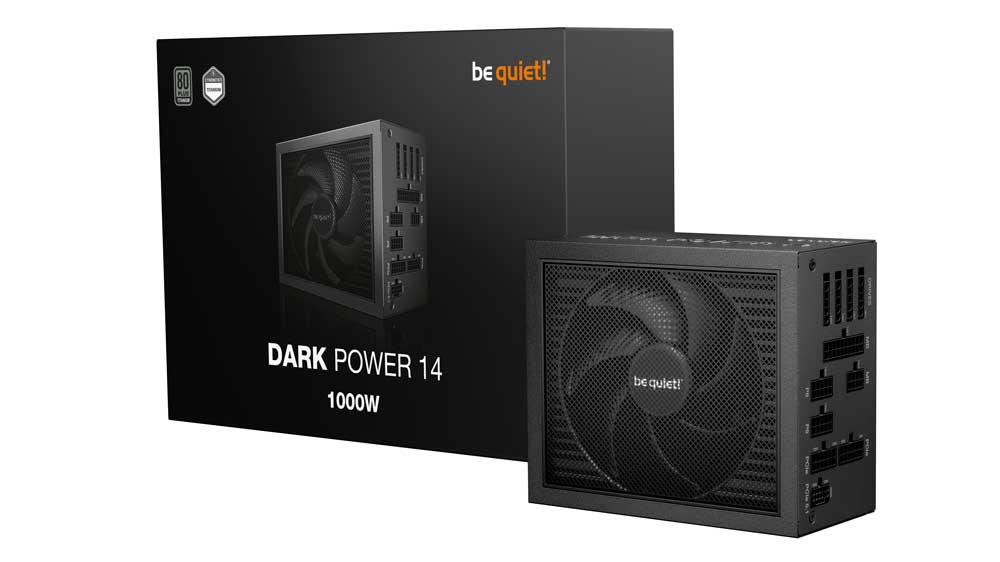
I’m currently using a ASUS ROG Loki SFX-L 1000 (atx 3.0) with my 4090 FE, but I just ordered the 5090 FE and I’m now wondering if I need to buy a PSU with atx 3.1 instead?
I was looking at the same PSU that I already have, but on the pictures of the box it just says “atx 3.0” while the description on the websites states “ATX 3.1, PCIE 5.1, 12V-2×6 Connector”
The current one I already have just states it has a “16-pin pci-e connector” on the box, but atx 3.0 compatible 🤷♂️
Hi,
Im thinking about to swap my Corsair RM1000X (2021 – non ATX 3.x) to a ATX 3.x because of the better transient response, my 7900XTX has some crazy power spikes and I think it’s causing some game crashes/driver timeouts, you think it’s worth the try?
The better transient response on the ATX 3.x is only on the 12HPWR connector or on all PCI-E connectors?
Appreciate the awnser.
Thank you
the better transient response is from within the PSU, but only the 12V-2×6 (or 12VHPWR) connector can deliver up to 600W sustained. I am not sure now if the PSU is the source of your problems, but only if you change it with something else you will find out.
HI,
I own a Corsair AX1200 and I’m thinking on buiding a new PC.
I’m not pretending inicialy to buy a new GPU, since I have a EVGA 1080TI FE, that I pretend to use until the new series from Radeon arrive (10XXX) next year.
Should I use this PSU, or is better to get a new one (ATX v3.1) ?
Is there any problem that I can get by using that PSU ?
Thanks.
if your PSU works fine so far, then no need to change it. If you now need to go to 12V-2×6 and a proper cable is not an option, then you will be forced for ATX v3.1 PSU
Old but gold article.
Hard question: I have a Cooler Master Silent Pro Hybrid 1300 watt (ATX 2.3, but very efficient) supporting 4 GPUs via pcie 8pin, with 1260 watt on the 12v.
I absolutely love this PSU, and I didn’t use it that much till now.
Theoretically I’d be able to use it with the adapter found inside the typical rtx5090 package, considering the performance values I read in old reviews and tests.
Is it a criminal intent?
Hi! You can use the adapter, yes. Personally, I disapprove of adapters because they introduce extra failure points.
Thanks! I’ll keep that in mind. Going to grab a new PSU as soon as the Silent X Max happens to be in stock (at a decent price…)
Need you once more: I have now two options for my rtx 5090
– cooler master mwe 1250 V2
– cooler master silent pro hybrid 1300 with 8pinx4 to 12v-2×6 cable
The second is top tier but older, the first mid tier but newer.
Should I stick with silent pro hybrid or switch to the newer though cheaper model?
Use your current PSU, but check the cable first. If you see high temperatures after 30-60 minutes of Furmark, only then invest in a new PSU.
Thank you, I’ll use the MWE in a second build and switch them just in case
“There can be ATX v3.1 PSUs WITHOUT the 12V-2×6 connector, which have lower transient response requirements (150% peak instead of 200%).”
What is meant by 12v-2×6 connector here? Is it the header on the PSU side? meaning a PSU like the Corsair HX 1500i, which doesn’t have a 12v-2×6 header on PSU side (instead provides a two 8 pin to 16pin cable) falls into this category and has a lower transient response requirement than native 12v-2×6 PSU-side header?
Hey Aris!
So, I’ve selected everything for the PC I’m gonna build and the only thing that’s left, it’s the PSU. I saw that JayZTwoCents is making a new personal build, and he selected the “be quiet! Straight Power 12 1200W” PSU, an ATX 3.1 one from Amazon. The problem is that in my country, every single “be quiet! Straight Power 12 1200W” PSU is marketed as ATX 3.0 and some of the websites in my country don’t even display the ATX version.
What should I do when a brand has a product that it’s ATX 3.1 (whether it’s native 3.1 or compliant 3.1) but it’s also an ATX 3.0 marketed in my country? it’s a mess. Should I buy the PSU from my country and it will be ATX 3.1 regardless of what the website or PSU box says?
Thank you very much!
Just got a prime tx-1600 in mail. Box shows atx 3 (not 3.1) but pcie5 and 12v 2×6. Will it have shorter sense pins on PSU side for full compatibility with 5090?
Thanks! Love the site. Bought through link, hope it worked.
Check the 12+4 pin header on the PSU’s modular socket. If it has shorter sense pins, it is ATX v3.1. Eitherway the cable is the same so it will work with the 5090!
Thank you!
Does the Super Flower Leadex VII XP 1200W support the new safety features of 12V-2×6? The connectors are proprietary so there’s no native connector on the PSU itself
the cable remains the same and it doesn’t have a native 12+4 pin, so it automatically moves to ATX v3.1 from 3.0 yes.
At the beginning of the article, you stated that current ATX 3.0 power supplies may have been revised. So, is there a way to understand this in my current power supply? My power supply is asus tuf 750g atx 3.0
My graphics card is 4070 super and there is H++ on the power input.
It says H+ on the 12pwr cable coming from the psu
Hi! Im a little confused as to what PSU I should get after reading this. Im running a 9800X3D and I will get a 5090. Can someone please guide me onto whats the “best” (I know its not that easy to objectively be the best, but you get me) PSU I could get for that combo.
Should I go with the atx 3.0 seasonic prime tx1600, or add 50 euros for the px2200 which is 3.1?
I found no reviews testing the platinum 2200w, but from what I know from the reviews testing same wattage platinum vs titanium, TI still has better regulation
If you need 2200W why not, at this price point 50 euros is not that much.
Hello Aris 🙂
Do you know if Seasonic has changed the 12VHPWR connectors ( to the 12V-2×6 ) on their high end Prime PSU´s ?
Im thinking on the Seasonic Prime TX 1600W ATX 3.0
I know that the new 2200w have the new one.
The reason for asking is that i read that they might have changed the connector without stating so on the box.
Kind regards
They must have. Unless they had a huge stock of 12VHPWR!
Hello. I have a Corsair HX1000i (2023 model – SKU: CP-9020259-EU). It doesn’t have 12VHPWR header nor the 12V-2×6. I think it has the 2x 8-pin (ATX v3.1). I plan to buy a RTX 4070ti Super. Will it be a problem and can i use the PSU 12VHPWR cable provided with the PSU ?
Thanks.
If I understood correctly what u say there will be no problem.
Sorry I am new to PSU. Could you be able clarify below please:
* Changing an ATX v3.0 PSU to an ATX v3.1 one only involves changing the 12+4 pin header to the new one (given that the PSU already has one).
* I dont understand what 12+4 pin header means? Is it referring to the cable or to the PSU?
* I dont understand “(given that the PSU already has one)” statement. What does the PSU already have?
* PSUs with native 12VHPWR (or 12V-2×6) cables can be ATX v3.1 compliant if they already meet the ATX v3.0 spec
AND
* There can be ATX v3.1 PSUs WITHOUT the 12V-2×6 connector, which have lower transient response requirements (150% peak instead of 200%).
* To be safe, buy a PSU with 12V-2×6 connector?
Is the 12VHPWR Cable from the FSP Hydro Ti Pro 1000W ATX 3.0 safe?
Yes, the cables are the same in both ATX v3.0 and v3.1 PSUs.
When buying a new psu today, should I just go for an atx 3.0 or is it more advisable to wait for more atx 3.1 options to come to market, from what I understand, there isn’t much of a change between the two and there’s even a downgrade. I want to use it for at least 5 years.
It all depends on the prices, of ATX v3.0 and v3.1. If the difference is large, then V3.0
I see, so if prices are close enough I should go for atx v3.1 but if the prices for 3.1 are ridiculous, I will just go for 3.0
Exactly!
Thank you, you and this site are a big help to all pc enthusiasts.
Hello Aris,
About “Actually, many ATX v3.0 PSUs already have a 12V-2×6 header instead of the 12VHPWR one” – do you know what companies and PSU models are sold with 12V-2×6 header?
I have to buy a new PSU (preferably 850/1000w and without stole my wallet) and my intention is to buy one that will be compatible in future, but as I read more about PSUs, ATX 3.0, ATX 3.1, advantages, disadvantages, best models, medium models… etc.
Thank you for your time
Hi, I have bought MSI PSU MEG AI1300P. Should I buy if there will be coming 12×6 cable from msi?
You bought it already, yes? The cable remains the same in 12V-2×6.
Would it be okay to use a 12vhpwr cable extension on a native 12vhpwr cable from a ATX 3.1, Pcie 5.1 psu?
do not use extensions on this cable please. It is dangerous. Get a longer native cable.
Her Aris Should i get an rmx shift 850 or seasonic focus gx-850 V3
If the side panel of the shift model suits you better then you go for it.
Hello Aris!
Wanted to ask you why does Seasonic promote the cable being new, if it stays the same?
https://www.tomshardware.com/pc-components/power-supplies/seasonic-unveils-600w-12v-2×6-gpu-power-cable-upgrade-companys-earlier-atx-30-psus-came-with-older-12vhpwr-cables
Hi! This cable must be by the brand that I visited during my stay in China last year, Linewell. It is of higher quality compared to the previous cable, as Seasonic states, but the fact is that for ATX v3.1 the cable remains the same! The only changes are in the GPU and PSU headers (for the PSU the 12+4 pin header is optional).
Hello aris.
I know it’s not good practice to use cable not from the psu maker itself but does all 12vhpwr cable have the same pin out across PSU makers?
I have an fsp hydro g pro 1000w and the cable that came with it barely bends and might pose a problem whenever I’ll be upgrading to a newer gpu.
if the PSU uses a native 12VHPWR or 12V-2×6 it should!
After reading the “Will my ATX v3.0 PSU or my GPU be compatible with 12V-2×6? Do I need a new cable/PSU/GPU? Everything you need to know!” article I was under the impression that ATX3.0 and ATX 3.1 had slightly different power delivery depending on the sense pins. It sounded like an ATX3.0 PSU would deliver 100-150w to a 12V-2×6 with open-open sense pins, while an ATX3.1 PSU delivers 0w to a 12V-2×6 with open-open sense pins. Am I understanding that correctly?
If so, I’d rather have an ATX3.1 PSU so a partially-seated 12V-2×6 cable isn’t getting 100-150w dumped into it, possibly leading to a melted connector.
If the cable is not fully inserted into the 12V-2×6 socket, it won’t deliver any power. This is because the sense pins won’t be in contact, since they are shorter in the header, unlike 12VHPWR.
Ah, okay, the new cables take up the slack. That’s reassuring, thanks!
Not the cables, the socket. I’ll get it eventually…